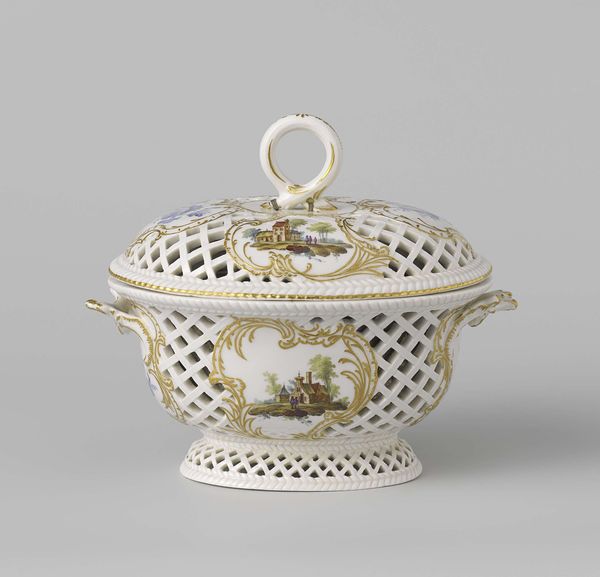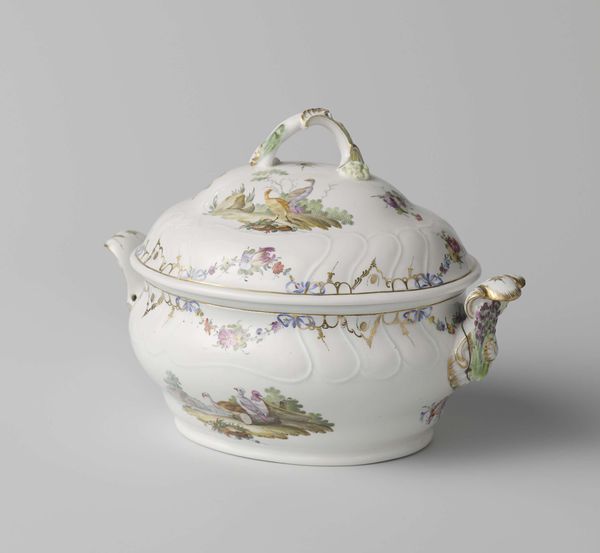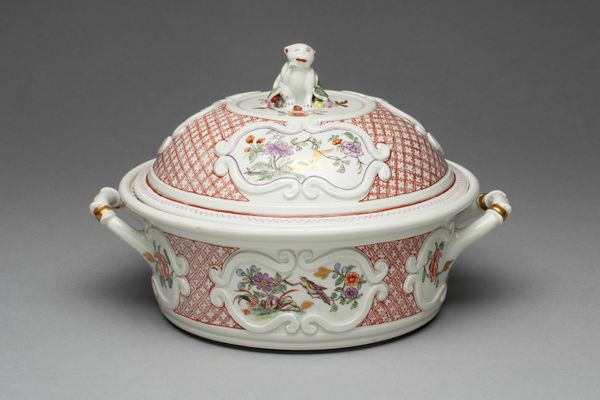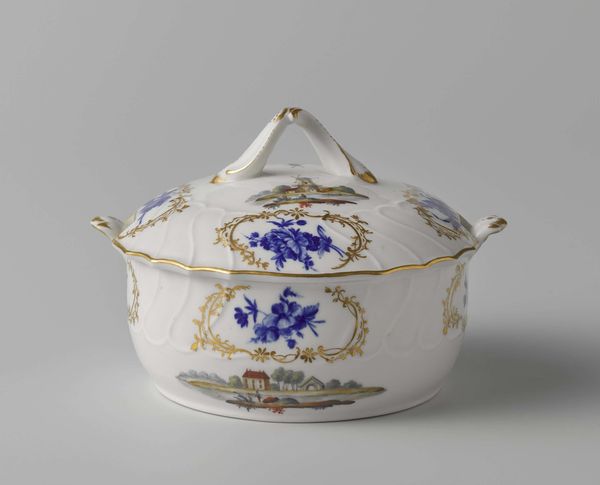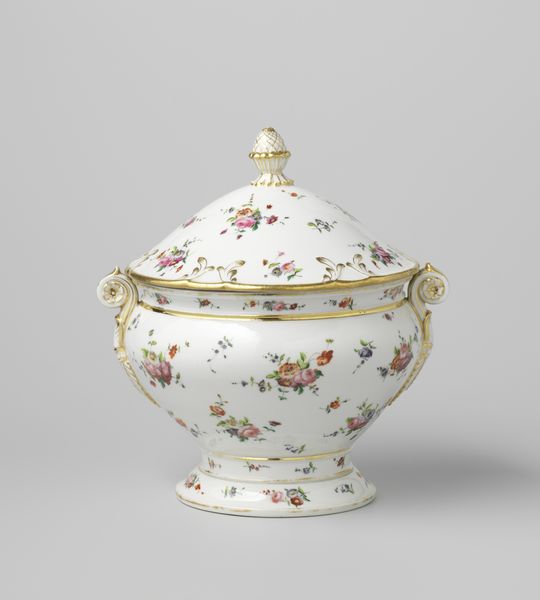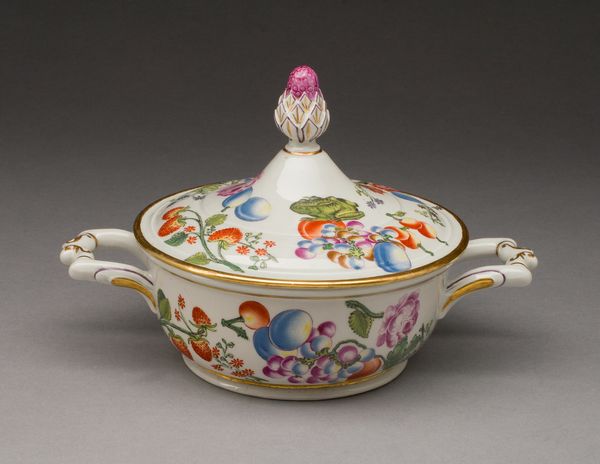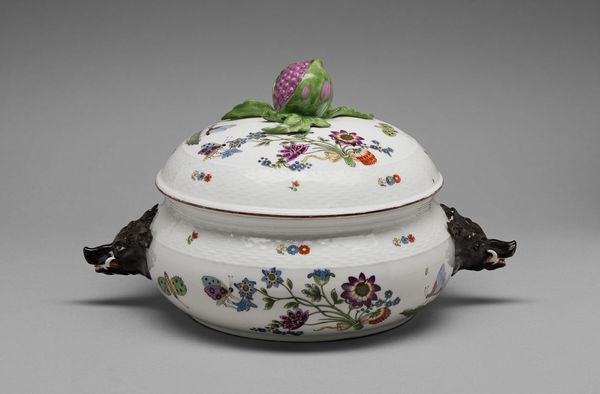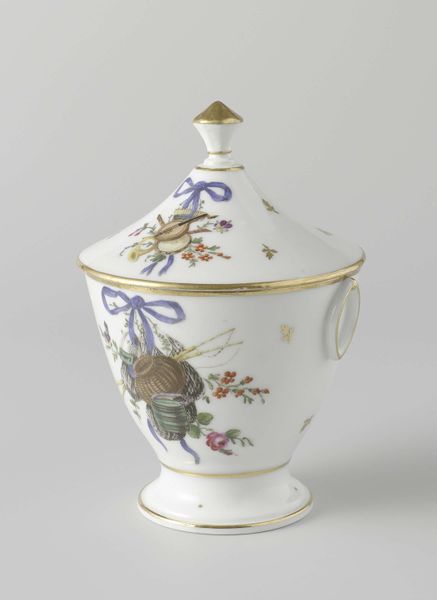
Dimensions: height 8.9 cm, width 17.5 cm, depth 13.8 cm, height 14 cm, width 16.6 cm, depth 14.2 cm, height 5.6 cm
Copyright: Rijks Museum: Open Domain
Curator: Here we have an exquisite terrine with lid, dating back to around 1780. It was crafted at the Porseleinfabriek Den Haag, employing earthenware and porcelain techniques, as one might expect. Editor: Wow, that's… intricately busy. My first thought is, did they ever actually use this, or was it just for show? It's giving me strong fancy-party-where-everyone-is-trying-too-hard vibes. Curator: Well, these terrines served multiple functions, especially amongst the upper classes. Beyond simple storage, it signifies wealth, and engagement with broader decorative trends. Its Rococo style certainly emphasized elegance. Consider the social and economic disparities of the time and how objects such as this reflected, or masked, these inequities. Editor: Okay, valid point. It's easy to forget, looking at something so pretty, that it probably represents a whole system of inequality. I'm still wondering how practical that lattice-work design is though – cleaning it must be a nightmare. Curator: That's where the display aspect comes in, the intricate piercing of the body, and the careful application of colorful flowers on the surface. One thing to notice is how function serves aesthetic appeal. The porcelain medium itself also holds stories of colonial trade. Editor: Colonial trade! I didn't even think about that. Porcelain itself becomes this symbol of power, right? Like, who has access to beauty, to delicate things, to something that probably wasn't made locally. I wonder who designed those little flower patterns. Were women involved, maybe? Curator: We often see female artistry subtly inscribed within domestic wares. Looking through the lens of intersectionality, this becomes critical: How does gender, class, and colonial power meet in an object like this terrine? How does access intersect with consumption? Editor: So, I started out thinking this was just a fancy bowl but now, thanks to you, it feels like a tiny, porcelain representation of a whole era – with all its beauty, complications, and hidden histories. I think my fancy-party analogy wasn't too far off! Curator: Precisely. That tension between immediate impression and deeper meaning is what makes studying decorative arts so rewarding.
Comments
No comments
Be the first to comment and join the conversation on the ultimate creative platform.

